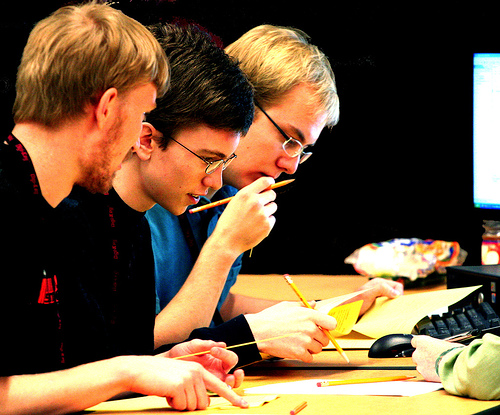
I can’t tell you how many times I’ve found myself stuck on a table with four or five others in a workshop being asked to come up with as many ideas as possible in the next twenty minutes for a particular problem that has been presented as a “group activity”.
What usually ends up happening is one person decides they are taking charge and another decides they are the only ones with any half decent intelligent solutions and between them they commandeer the time until we are asked to “share” our best ideas.
I loathe it.
Because my brain doesn’t operate best that way and I get frustrated seeing how those with the loudest voices are often the only ones heard and the quieter introverted minds are pushed out of the conversation. Not only that my mind goes blank and I feel stupid.
Brain-storming has been used as a technique to generate new ideas and thoughts to problem solve for decades. But unless handled well, it is a game fraught with danger.
Whilst two heads are better than one for problem solving, how multiple heads work best for problem solving doesn’t come from everyone jumping into the communal thinking pot simultaneously straight away.
Every brain is different. Every brain has it’s own way it likes best to work. Some like noise or music. Some need silence. Some want to voice every thought out loud, some prefer to mull things over first before pitching in. Some simply don’t want to share, anything, at all.
For brain storming to be effective there are certain rules to the game, which need to be adhered to.
1. Before starting make sure everyone is clear what the agenda is. What is the issue, task, project you are being asked to brain-storm around?
2. Allow those engaging in the process silent individual thinking time first, to get as many of their own ideas out and onto paper as possible.
3. All ideas must be kept in a protected zone. Like the flora and fauna in a National Park, all ideas must be seen to have equal merit, no matter how nonsensical, whimsical or just plain quirky they are. If all ideas are equal they can all be seen, examined and heard. And sometimes it is the left of field idea that may have the most merit. After all the whole point of brain storming is to get as many ideas on the table rather than to just come up with one perfect idea straight away.
4. Once all ideas are tabled either on paper, a whiteboard or perhaps on post it notes on a wall, allow all contributors to start perusing them to start the process of consideration and discussion in a constructive fashion.
5. Don’t expect the solution to be immediately obvious. Ideas need to be nurtured, explored and considered. If the expected outcome is for an “answer” then brain storming might not be the best method to achieve that, at least, not in the first instance.
6. Don’t let the manager, team leader or loudest voice direct the conversation from one perspective i.e. theirs. They will have their own ideas to contribute, but these need to be considered in the context of the whole not as examples to others, which can shut the whole brain storming activity down by switching off creative thought.
It’s just like when we are asked to not think about an elephant in a pink tutu. Once that image has come to mind, all you can think about are elephants in pink tutus.
7. Provide a brain safe brain-storming environment. To work at their best, brains need to feel safe and this comes ensuring that no brain feels threatened by the status of others or the uncertainty of others reactions. Brain-storming is not the place for judgment or ridicule.
What are your thoughts on brain-storming?
What has worked or not worked well for you?

